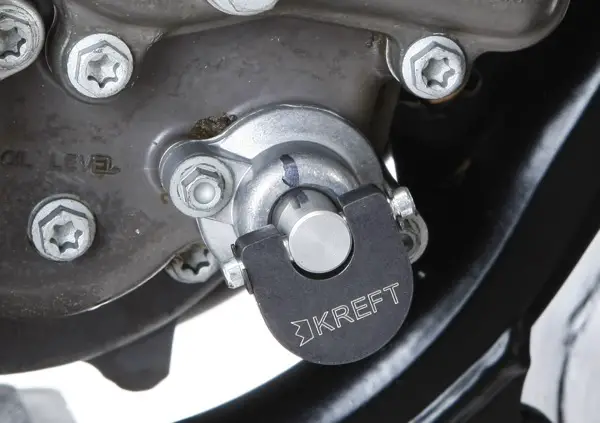THIS MUCH WE KNOW! MAKING THE MOST OF THE POWER VALVE ON YOUR KTM 250/300 TWO-STROKE

The motocross market that was once rich with two-strokes has been reduced to only a handful of 250cc two-stroke bikes. Perhaps the shining star of the remaining two-strokes is the KTM 250SX. It is the most powerful 250cc two-stroke ever made, and given that it has benefited from every modern upgrade that KTM’s four-stroke line has received, it is the most modern two-stroke on the track.
KTM, in their infinite wisdom, realized that two-stroke owners come in a wide variety of shapes and riding styles; thus they made the 250SX engine tunable in three ways.
How you tune your KTM 250SX, and which method you use, depends on whether you are using it for woods, desert, trail, play or racing applications. Here is MXA’s guide to “Living with KTM’s Power Valve” and engine mods.
The KTM 250SX (and 300EX-C) comes from the factory with two different ignition maps. All you have to do to access the ignition maps is to plug and unplug one wire. Located in front of the fuel tank (on the left side of the frame) is a wire that is fitted with a white male/female plastic connector. On the newer 250SX models the plug is located a little farther back and may require removing the gas tank to access it. Since it is the only white connector on this side of the frame, it is easily identified. The two ignition maps imbedded in the KTM’s black box are “soft” and “performance.”
Soft map. To activate the “soft” map, which refers to the fact that the power delivery will be smoothed out for ease of use, all you have to do is unplug the white connector. Most motocross racers only use the “soft” map on rock-hard or slippery surfaces because it takes a large amount of bark out of the engine.
Performance map. The “performance” map is really the stock map. It is activated when the white connector ends are plugged together. Every MXA test rider prefers the “performance” map, and that is the way the bike is shipped from the factory.
KTM’s power valve is controlled in two ways.
(1) Preload. The main power-valve spring can be preloaded by turning the Allen head adjuster in the center of the power-valve spring cap. The stock spring preload is set at the factory to allow the power-valve flapper to open at 5600 rpm. If you turn the Allen head adjuster one turn out (counterclockwise), the power valve will open 150 rpm sooner (at 5450 rpm). If you turn it in a full turn (clockwise), the power valve will open 150 rpm later (at 5750 rpm). The longer the power-valve flapper is closed, the harder the power will hit?because it will have built up more rpm. Most MXA test riders run the stock 5600 rpm setting. There is one caveat, though: once you change the power-valve adjuster setting, you have to count turns to keep track of where the stock setting was.
(2) Auxiliary springs. In your KTM tool kit there are two auxiliary power springs. These springs fit inside the main power-valve spring. Each spring is color-coded (yellow, red or green). While the larger-diameter main power-valve spring determines when the power-valve flapper begins to open, the smaller color-coded auxiliary springs determine how fast it opens, and at what rpm it will be fully open. The yellow spring is the stock spring. The bike comes with this spring installed at the factory. It is fully open at 7900 rpm, which means that the power valve starts to open at 5600 rpm and is fully open at 7900 rpm.
IF ALL OF THIS IS TOO MUCH TROUBLE

The Kreft Power Dial makes it possible to adjust the spring preload on the KTM 250/300 Power Valve without tools. In fact, we could pull over to the side of the track and adjust it in seconds before continuing on our merry way. The MXA test riders started by turning the adjust in one-half turn and then out one-half turn. The difference between the two settings is very noticeable. This was a worthwhile tuning exercise. $89.95 ?www.kreftmoto.com or (970) 403-2715.




Comments are closed.